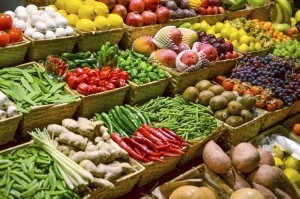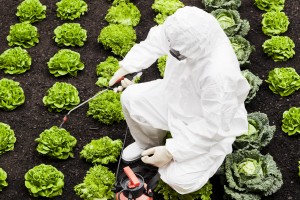
In October, the Special Rapporteur on Right to Food Ms. Hilal Elver will present her report to the Human Rights Council, just a couple of months before the Conference of the Parties to the United Nations Framework Convention on Climate Change (UNFCCC), or CoP21, whose aim is to reach a legally binding agreement to combat climate change. Her report will focus on the impacts of climate change on the right to food. She mentioned her interest in topics such as the impact of climate change on food security and the impact of food systems on climate change.

Last month, CIEL participated in a meeting with the Special Rapporteur, during which she noted the broadness of the right to food, which relates to the environment, soil, water, and health – as well as climate change.
As her report’s length is limited, it will not be able to address all the issues related to the right to food. However, CIEL took the opportunity of meeting with her to highlight and share some of the impacts of environmental activities on the enjoyment of the right to food:
- A rights-based approach to land. Any approach to reducing emissions from land use must prioritize activities that promote rights and protect biodiversity. It must be done in a way that recognizes and addresses the unique nature of land and its role in respecting the right to food and ensuring food security. That includes ensuring no conversion of arable land to non-food uses, and reducing food waste and over-consumption. Carbon sequestration activities that threaten food security, land rights, local livelihoods or biodiversity, such as industrial-scale plantations, scaled up bioenergy, Bio-energy with Carbon Capture and Storage (BECCS), and biochar, among other technologies must be avoided.
-

Man in protective suit spraying field Addressing pesticides and fertilizers. These chemicals are presented as part of the solution to adapting our food production systems to the challenges of climate change. However they can be harmful to humans and the environment, accumulate in soil, vegetation, agricultural lands, and animals, and contaminate the environment and food chain, thus actively contributing to the degradation of the enjoyment of the right to food.
- Mercury pollution. Coal burning, mining, and industrial activities that process ores to produce metals or cement are not only an important source of CO2 release but also of mercury release into the environment. Food has become the main source of human exposure to mercury and its terrible (including possibly fatal) health consequences. Mercury, in its methylmercury form, builds up in fish, shellfish, and animals that eat fish. This affects people’s right to food, as fish provide more than 2.9 billion people with at least 15 percent of their average per capita animal protein intake.
- Hazardous chemicals migration. Chemicals contained in packaged food, household cookware, bottles, and cans can migrate into our food and beverages, exposing us to chemicals that bioaccumulate, produce adverse developmental, reproductive, neurological, and immune effects in humans, flora, and fauna.
- POPs. Hazardous chemicals resistant to degradation, called Persistent Organic Pollutants (or POPs), bioaccumulate through the food web and can travel long distances in the atmosphere regardless where they are produced or used. They particularly accumulate in the Arctic region and can be found in fish, shellfish, and wild food with high fat content. They represent an extremely serious threat to the traditional livelihoods of indigenous Arctic peoples and to their right to traditional food sources. As the climate warms, the POPs accumulated in water and ice sinks are re-released into the atmosphere, re-entering the food chain, and further impacting human health and food safety.
- ETOs. Extra-territorial dimensions of human rights obligations should be addressed and operationalized, as they are central to closing the protection gaps resulting from economic globalization.
Much remains to be done to guarantee the right to food, but we hope that Ms. Hilal Elver’s report will contribute to raising awareness of these issues and help governments in taking further steps to protect this crucial right.
Originally posted on July 13, 2015.
